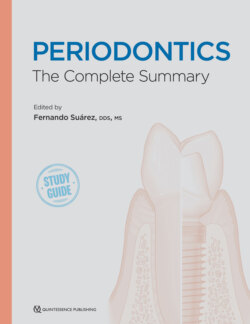Читать книгу Periodontics - Fernando Suarez - Страница 43
На сайте Литреса книга снята с продажи.
Epidemiology
ОглавлениеEpidemiologic studies must be conducted in humans, comprising a control or comparison group, and should consider all clinically relevant endpoints. These studies must provide data on the prevalence of periodontal diseases in different populations, as well as the severity of the cases. Additionally, the studies should clarify aspects of the etiology and risk factors and should provide information regarding the effectiveness of preventive and therapeutic measures on the population. Information on epidemiologic studies is gathered by clinical and radiographic assessment of the periodontal status. On the other hand, an index is a numeric value that is often used to describe the relative status of the population on a scale with definite upper and lower limits.6 Since the 1950s, different clinical, laboratory, and radiologic recording systems and indices have been used to measure the prevalence, extent, and severity of periodontal diseases at individual and population levels. Indices require validity, reliability, clarity, simplicity, objectivity, quantifiability, sensitivity, and acceptability by both the examiner and the subject.7–9 Some of the most commonly used in periodontology indices are shown in Box 3-1.10–17
BOX 3-1 Commonly employed indices in periodontics10–17
| Assessment of periodontal inflammationGingival Index10Gingival Bleeding Index11Assessment of plaquePlaque Index12Hygiene Analysis Index13Assessment of loss of periodontal supportRussell’s Periodontal Index14Periodontal Disease Index15Radiographic assessment of radiographic bone lossSchei’s ruler16Percent of bone lossAssessment of periodontal treatment needsCommunity Periodontal Index of Treatment Needs17 |
